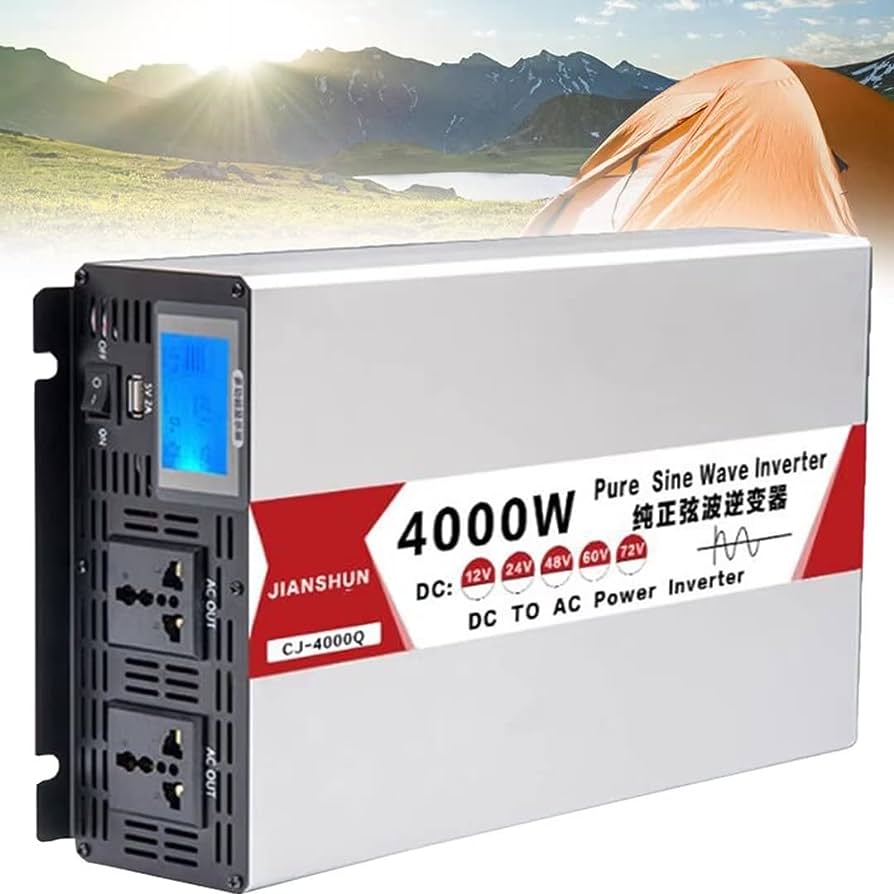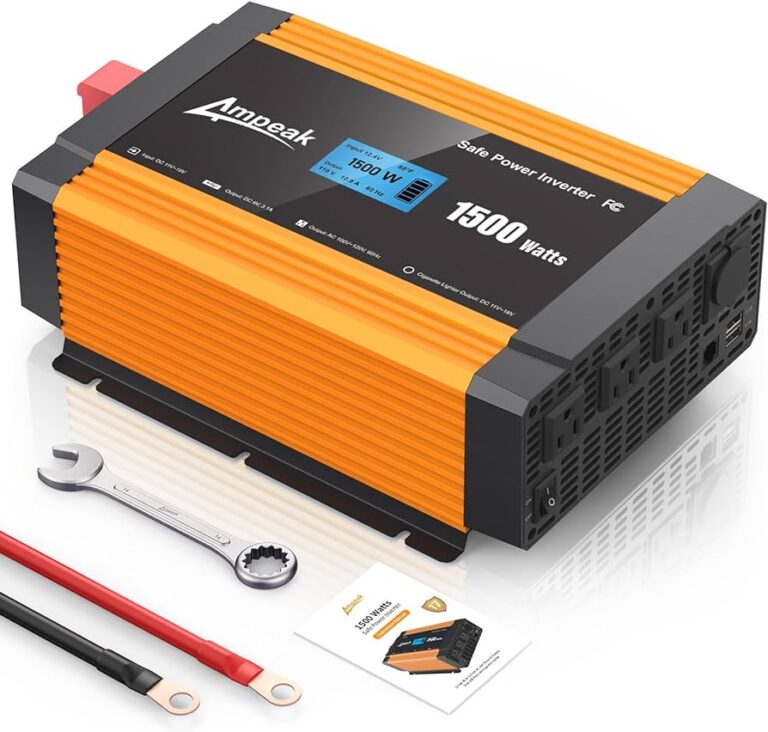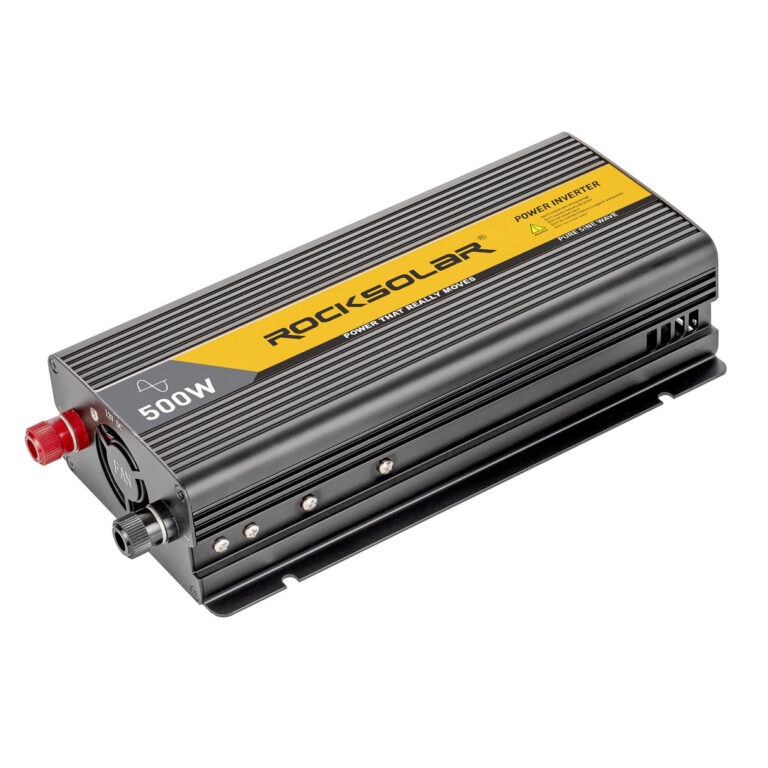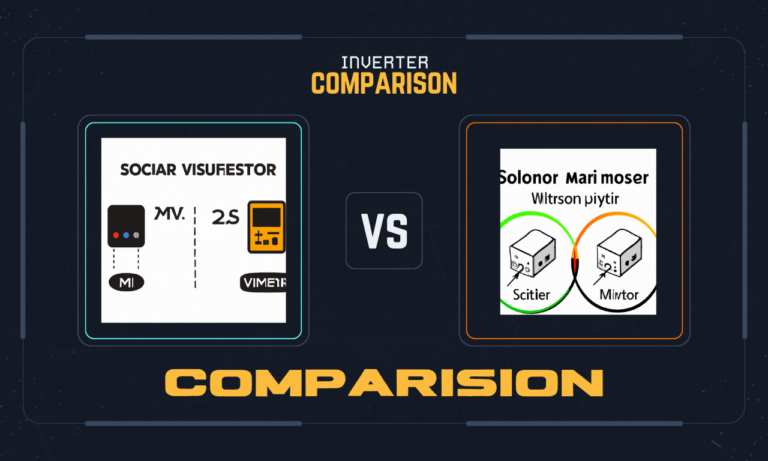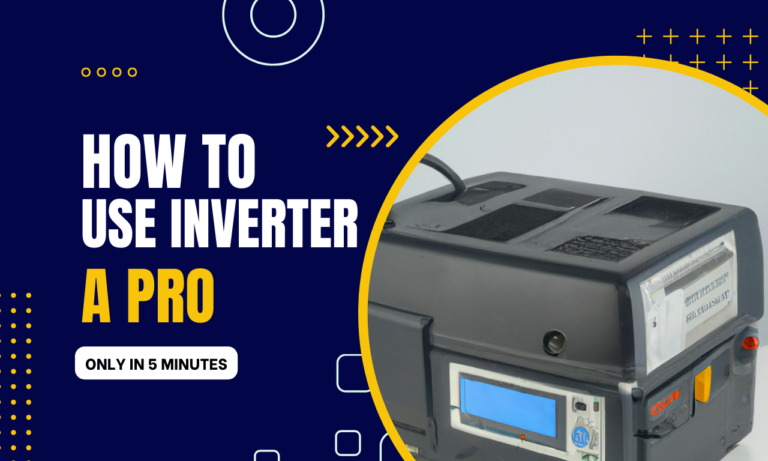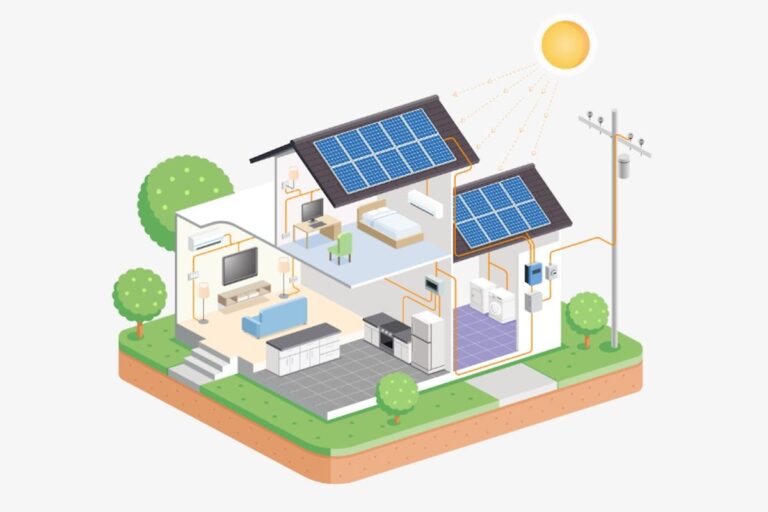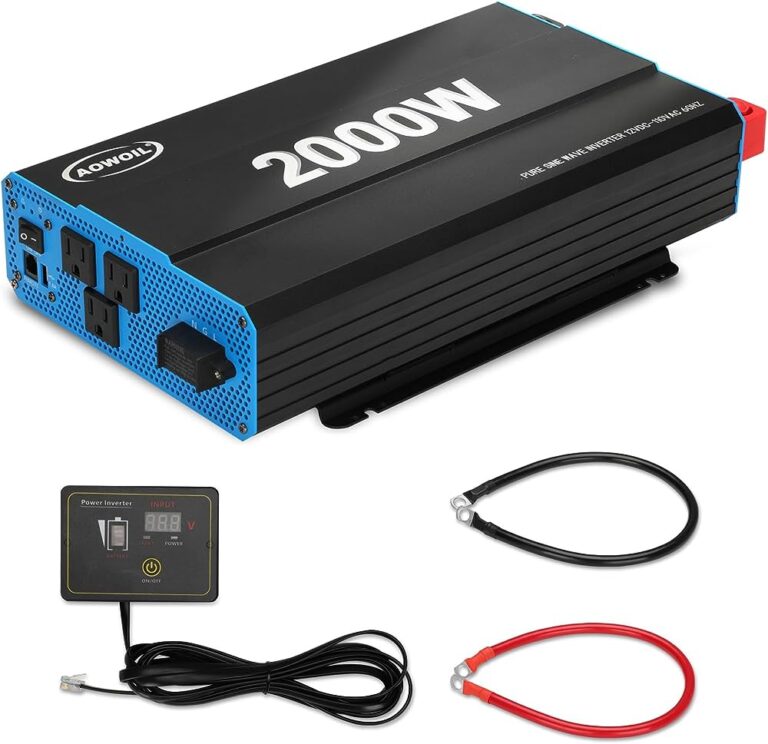Converting Power: A Guide to 48V to 120V Inverters And Their Applications
A guide to 48V to 120V inverters and their applications, including the difference between inverters and converters, and what can be run with a 120-watt power inverter. This comprehensive guide provides valuable information for those looking to understand the conversion of power and the practical applications of inverters.

Credit: tripplite.eaton.com
Understanding 48V To 120V Inverters
Discover the applications of 48V to 120V inverters and learn how these devices efficiently convert power from 48V DC to 120V AC, making them ideal for powering household electronics, laptops, cell phones, tablets, gaming devices, and more. Upgrade your power conversion capabilities with these versatile inverters.
What Is A 48V To 120V Inverter?
A 48V to 120V inverter is a device that converts DC (direct current) power from a 48-volt battery bank into AC (alternating current) power at 120 volts. This type of inverter is commonly used in off-grid solar power systems, telecommunications equipment, RVs, and other applications where converting the higher voltage DC power to standard AC power is necessary.
How Do 48V To 120V Inverters Work?
Here are the key principles behind the operation of a 48V to 120V inverter:
- DC to AC Conversion: The inverter takes the DC power from the battery and uses electronic circuitry to convert it into AC power.
- Pulse Width Modulation (PWM): The inverter uses a PWM technique to replicate the sine wave of AC power. It rapidly switches the DC power on and off to create a series of pulses that mimic the AC waveform.
- Filtering and Stabilization: The output of the inverter goes through filters and stabilization circuits to remove any harmonic distortions and fluctuations, ensuring a clean and stable AC power output.
- Voltage Regulation: The inverter also regulates the output voltage to maintain it at the desired 120 volts, regardless of fluctuations in the input DC voltage from the battery bank. Backup power solutions: Battery inverter generators
Key Features And Specifications Of 48V To 120V Inverters:
- Input Voltage: 48V to 120V inverters are specifically designed to accept a DC input voltage of 48 volts from the battery bank.
- Output Voltage: The output voltage of these inverters is 120 volts AC, which is compatible with most standard household appliances and devices.
- Power Capacity: The power capacity of 48V to 120V inverters varies depending on the specific model and application. They are available in various wattage ratings, ranging from a few hundred watts to several kilowatts.
- Waveform Type: Some inverters produce a modified sine wave output, while others generate a pure sine wave output. Pure sine wave inverters provide a cleaner and more stable AC power, making them suitable for sensitive electronics and appliances.
- Efficiency: The efficiency of 48V to 120V inverters is an important factor to consider. Higher efficiency inverters convert a larger percentage of the input DC power into usable AC power, reducing energy wastage and maximizing the performance of the system.
- Protection Features: Many inverters come with built-in protection features such as overload protection, overvoltage protection, short circuit protection, and thermal protection. These features safeguard the inverter and connected devices from potential damage.
Overall, 48V to 120V inverters serve as a critical link between DC power sources, such as batteries or solar panels, and AC-powered devices. Their versatility and reliability make them indispensable in various off-grid and backup power applications.
Applications Of 48V To 120V Inverters
With 48V to 120V inverters, you can easily convert power from 48V DC sources to 120V AC, making it ideal for various applications such as powering household electronics, laptops, cellphones, and gaming devices. Enjoy the convenience of dual USB ports for charging USB-powered devices.
Powering Household Electronics:
- 48V to 120V inverters are ideal for powering various household electronics.
- With a 120 watt power inverter, you can run a range of devices and appliances, providing convenience and flexibility.
- Here are some examples of common household electronics compatible with 48V to 120V inverters:
- Laptops and computers: Stay connected and get work done even during power outages.
- Gaming consoles: Enjoy uninterrupted gaming sessions without worrying about power supply.
- Televisions: Keep the entertainment going and binge-watch your favorite shows.
- Wi-Fi routers: Stay connected to the internet for work, online classes, or entertainment.
- Small kitchen appliances: Power blenders, toasters, coffee makers, and more for a quick and convenient meal preparation.
- Mobile devices: Charge your phones, tablets, and other portable devices on the go.
Off-Grid And Backup Power Solutions:
- 48V to 120V inverters are valuable in off-grid applications and as backup power solutions.
- Off-grid living: In remote areas without access to the grid, inverters can convert your 48V battery bank power to 120V AC power for running essential electronics.
- Backup power for emergencies: Inverters provide a reliable power source during power outages, ensuring essential devices like lights, refrigerators, and communication systems stay functional.
- Renewable energy systems: Pairing 48V to 120V inverters with solar panels or wind turbines allows you to harness and utilize clean energy, reducing reliance on fossil fuels.
Using 48V To 120V Inverters In Rvs And Boats:
- RVs and boats often require power systems that can operate on both batteries and shore power. 48V to 120V inverters are an excellent choice for these applications.
- Convenient power source: Inverters allow you to power various appliances and electronics, such as lights, kitchen appliances, entertainment systems, and more while you’re on the road or at sea.
- Energy efficiency: 48V to 120V inverters efficiently convert DC power from the batteries to AC power, reducing energy waste and maximizing battery life.
- Versatility: Whether you’re camping in an RV or sailing on a boat, having a 48V to 120V inverter ensures you have reliable power for your devices wherever you go.
Emergency Power Backup With 48V To 120V Inverters:
- 48V to 120V inverters are a crucial part of emergency preparedness, providing backup power when it’s needed the most.
- Power during natural disasters: In the event of hurricanes, storms, or other natural disasters that cause power outages, inverters can keep your essential devices running, helping you stay connected and safe.
- Medical equipment: Having a 48V to 120V inverter as part of your emergency backup plan ensures that life-saving medical equipment, such as oxygen concentrators, CPAP machines, or refrigerated medications, has uninterrupted power supply.
- Peace of mind: With a reliable backup power solution in place, you can have peace of mind knowing that you’re prepared for unexpected power disruptions.
By harnessing the power of 48V to 120V inverters, you can power a wide range of household electronics, enjoy off-grid living, ensure backup power during emergencies, and enhance the convenience of your RV or boat adventures. These versatile inverters offer flexibility, energy efficiency, and peace of mind, making them an essential component of various applications.
Can a 110V to 12V inverter be used for converting power from 48V to 120V?
When faced with the task of converting power from 48V to 120V, it is crucial to ensure that you are choosing the right 110v to 12v inverter for the job. While a 110V to 12V inverter can effectively convert power within its voltage range, it cannot handle the higher voltage requirements of a 48V to 120V conversion. It is important to select an inverter that specifically matches the voltage specifications needed for the task at hand.
Selecting The Right 48V To 120V Inverter
Selecting the right 48V to 120V inverter is crucial for converting power efficiently. This guide explores the applications of these inverters and provides helpful insights for making the best choice.
When it comes to choosing the right 48V to 120V inverter, there are several factors to consider. Here are some key points to help you make an informed decision:
- Power requirements and load capacity:
- Determine the total power requirements of your devices that will be connected to the inverter.
- Ensure that the inverter you choose has a sufficient load capacity to handle your power needs.
- Waveform type: Modified sine wave vs. Pure sine wave:
- Consider the waveform type that best suits your equipment.
- Modified sine wave inverters are more affordable but may not be suitable for sensitive electronics.
- Pure sine wave inverters provide a clean and stable power output, making them ideal for delicate devices.
- Efficiency and power conversion:
- Look for inverters with high efficiency ratings to minimize power loss during conversion.
- Efficiency is especially important if you plan on using the inverter for extended periods or in off-grid situations.
- Popular brands and models of 48V to 120V inverters:
- Research different brands and models to find reputable options that meet your requirements.
- Consider factors such as reliability, warranty, and customer support.
- Features and benefits comparison:
- Compare the features offered by different inverters to find the one that suits your needs.
- Look for features like overload protection, low voltage shutdown, and thermal protection.
- Customer reviews and ratings:
- Read customer reviews and ratings to gauge real-world performance and customer satisfaction.
- Consider the feedback from users who have similar power requirements and applications.
By considering these factors, you can select the right 48V to 120V inverter that meets your power needs efficiently and reliably. Remember to assess your specific requirements and prioritize features that align with your intended applications.
Is a 220V Solar Inverter Compatible with a 48V to 120V Inverter?
Yes, a 220V solar inverter can be compatible with a 48V to 120V inverter, but it is important to consider the 220v solar inverter efficiency. The efficiency of the inverter determines how much energy is lost during the conversion process from the solar panels to usable electricity. It is recommended to choose an inverter with high efficiency to ensure optimal performance and minimize energy wastage.
Frequently Asked Questions For Converting Power: A Guide To 48V To 120V Inverters And Their Applications
What Is The Difference Between A Power Inverter And A Power Converter?
A power inverter and a power converter are both power-electronic devices, but they serve different purposes. A power converter can transform electric power from one form (AC or DC) to another form (AC or DC). On the other hand, a power inverter is a type of power converter that only converts DC power into AC power.
In simpler terms, a power converter can convert power between different types (AC to DC or DC to AC), while a power inverter specifically converts DC power to AC power. This means that a power converter has a wider range of applications, as it can convert power in both directions, while a power inverter is mainly used for converting DC power from batteries or solar panels into AC power for household devices.
Overall, the main difference between a power inverter and a power converter lies in their ability to convert power in different directions.
What Can You Run With A 120 Watt Power Inverter?
A 120-watt power inverter can run standard household electronics using the 120-Volt AC outlet. It also has dual USB ports that can power devices like laptops, cell phones, tablets, gaming devices, and most other USB-powered devices.
How Many Batteries Do I Need For A 48V Inverter?
For a 48V inverter, the number of batteries you need depends on the power requirements of your appliances and the capacity of each battery. To calculate this, you’ll need to determine the total power consumption of your devices in watts and the runtime you desire.
To get an estimate, divide the total power consumption by the voltage of the batteries (48V) to get the current in amps. Next, divide the current by the capacity of a single battery in amp-hours to find the number of batteries needed.
It’s recommended to oversize your battery bank to allow for inefficiencies and battery degradation. For example, if your devices consume a total of 1000 watts and each battery has a capacity of 100 amp-hours, you would need 10 batteries (1000W / 48V = 20.
8A, 20. 8A / 100Ah = 10 batteries). Keep in mind that this is a general guideline, and consulting with a professional is recommended for a more accurate calculation based on your specific needs.
What Is The Difference Between An Inverter And A Converter In An Rv?
In an RV, an inverter and a converter serve different purposes. A converter is a power-electronic device that can convert electric power from one form (AC or DC) to another form (AC or DC). On the other hand, an inverter is a type of power electronic converter that converts DC power into AC power.
The main difference between the two is the direction of power flow. A converter transforms power from one form to another, while an inverter changes DC power into AC power. In practical terms, an inverter allows you to use AC-powered devices, like household electronics, while running on your RV’s DC power source, like batteries.
It is commonly used to power appliances, electronics, and other devices that require AC voltage. A converter, on the other hand, is used to convert the power from shore power or a generator into DC power to charge the RV’s batteries and power the 12-volt DC systems on board.
So, in summary, a converter converts power from one form to another, while an inverter converts DC power into AC power.
Conclusion
A 48V to 120V inverter? The number of batteries needed for a 48V to 120V inverter depends on various factors such as the power requirements of the devices being used, the duration of usage, and the battery capacity. In general, it is recommended to have multiple batteries connected in series to achieve the desired voltage.
For example, if each battery has a voltage of 12V, then four batteries can be connected in series to form a 48V system. However, it is important to consider the amp-hour rating of the batteries to ensure they can provide sufficient power for the connected devices.
Additionally, using deep-cycle batteries specifically designed for inverters can optimize performance and increase battery life. Consulting the manufacturer’s guidelines and working with a professional can help determine the exact number and type of batteries required for your specific application.

